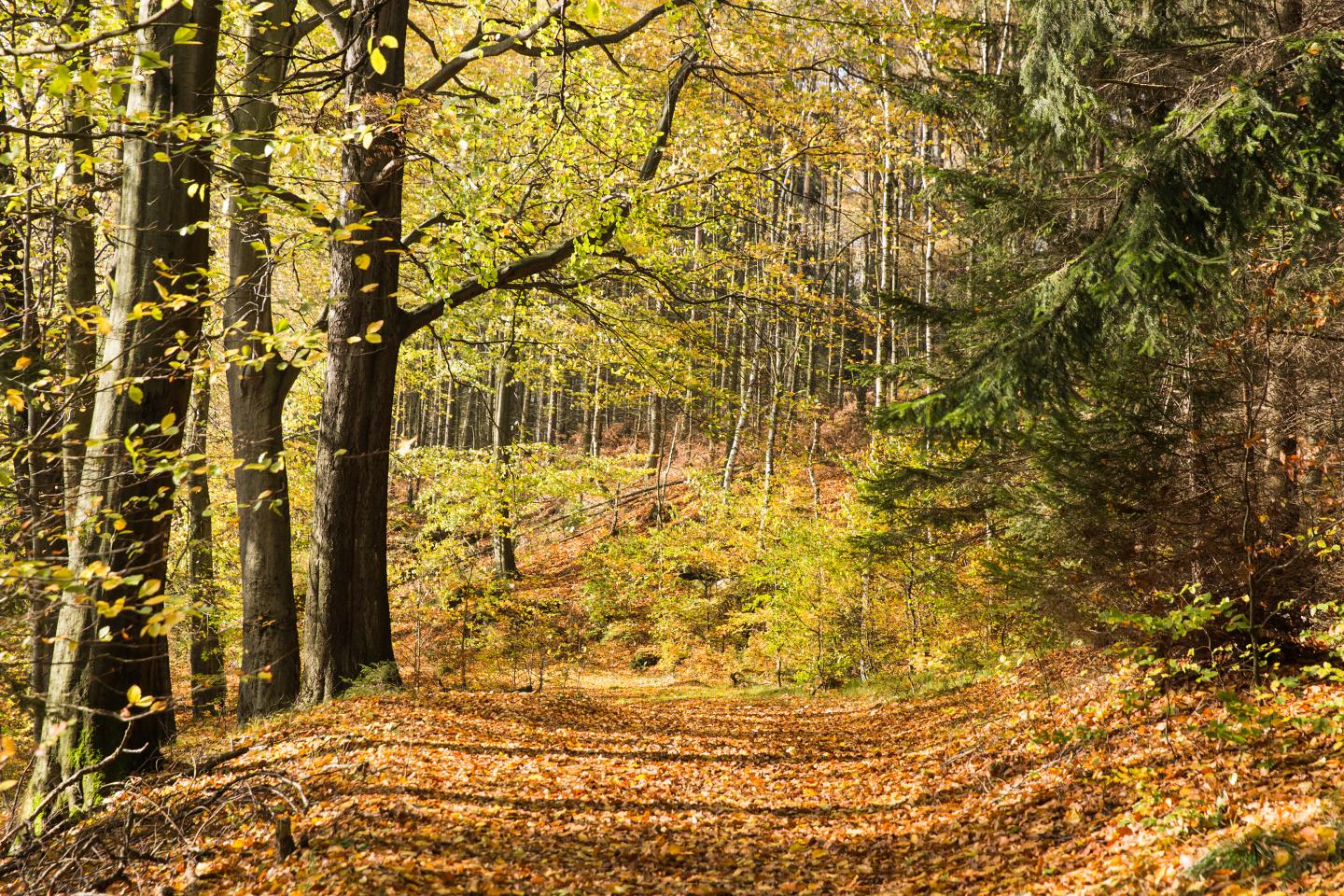 |
| Reviews and Templates for Expression We |
The importance of biodiversity in forests could increase due to climate change

IMAGE: This is a biodiverse forest with Norway spruce, beech and birch trees. Picture was taken in autumn in middle Germany. view more
Credit: Christian Hueller
Leipzig. Forests fulfil numerous important functions, and do so particularly well if they are rich in different species of trees. This is the result of a new study. In addition, forest managers do not have to decide on the provision of solely one function - such as wood production or nature conservation - as a second study demonstrates: several services provided by forest ecosystems can be improved at the same time. Both studies were led by scientists from Leipzig University and the German Centre for Integrative Biodiversity Research (iDiv), and published in the prestigious journal Ecology Letters.
Forests are of great importance to humans: the wood grown in forests is used in our houses for furniture, roof timbers and flooring; forests store carbon from the air and thus counteract climate change, they help prevent soil erosion and regulate the water cycle. Also when we go for a walk in a forest, we use it for recreation. The basis for these benefits are functions that constantly take place in a forest: the trees carry out photosynthesis, grow, produce offspring, defend themselves against hungry insects and deer, fight off pathogens and protect themselves against drought. Nutrients are taken up by the trees and are then released when the trees die and are decomposed.
A new study, led by researchers from Leipzig University and the German Centre for Integrative Biodiversity Research (iDiv), demonstrates that many of these ecosystem functions perform better in forests with a higher level of biodiversity, i.e., when forests are made up of multiple rather than just a single tree species. As part of the European-wide research project "FunDivEUROPE" the researchers investigated the importance of biodiversity for forest functioning in six countries across Europe: Germany, Finland, Poland, Romania, Italy and Spain. Within forested regions, the scientists selected plots that varied in the number of tree species, from one to five species. In Germany, for example, mixtures consisted of beech, oak, Norway spruce, birch and hornbeam. The researchers then measured 26 functions in these plots that are relevant to nutrient and carbon cycles, the growth and resilience of the trees, and forest regeneration. Their findings show that when trees inhabit forests with many tree species, they grow at a faster rate, store more carbon and are more resistant to pests and diseases than trees in species-poor forests. "Therefore, converting forest monocultures to multi-species forests should generally result in a higher delivery of ecosystem goods and services to humans", says Sophia Ratcliffe, who has led the study at Leipzig University.
The findings of this research also indicate that the positive correlation between tree diversity and forest functioning is strongest in regions where water for the trees is scarce and the growing seasons are longer, i.e., in southern and central Europe. Christian Wirth, Head of the Department for Systematic Botany and Functional Biodiversity at Leipzig University, Managing Director of the German Centre for Integrative Biodiversity Research (iDiv) and Fellow at the Max Planck Institute for Biogeochemistry, explains why this is important: "Our summers will be drier and longer as a result of climate change. We therefore presume that, in the future, it will be even more important to manage forests in a way that they have a high diversity of tree species."
Another study shows that for forest managers, it is not necessary to concentrate on one particular ecosystem service that they would like to improve in forests. This study was also carried out in the same six woodland areas and with significant contribution of the researchers from Leipzig. The scientists have carefully examined 28 ecosystem functions and have addressed the following question: if an ecosystem function in a forest is particularly high, then does this negatively affect any other ecosystem function? The answer is "no"; according to the findings of the investigation - in a forest, several functions can be simultaneously high.
This has practical implications for the management of forests, Fons van der Plas, the first author of the study, says: "In recent years, scientists have become increasingly interested in how one could promote so-called ecosystem multifunctionality, the simultaneous provisioning of multiple ecosystem services. Our study has shown that ecosystem multifunctionality is not just a theoretical concept, but that it is valid in forests throughout Europe, as the promotion of one type of service can go hand-in-hand with the promotion of other types of services." The researchers have also found, however, that in many cases forest multifunctionality could be increased - a huge potential for forest management.
|
|
|
|
Copyright remains with the original authors |